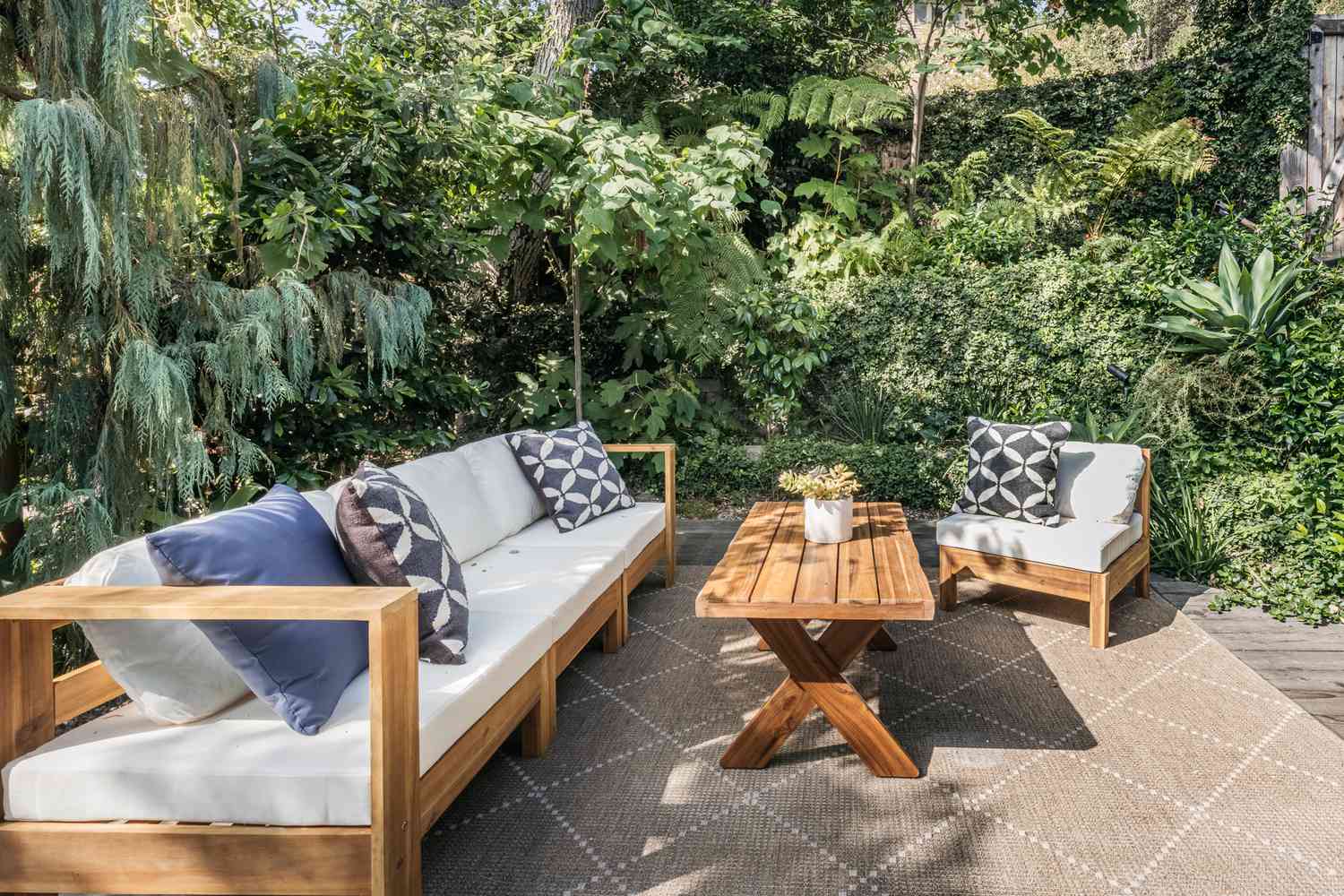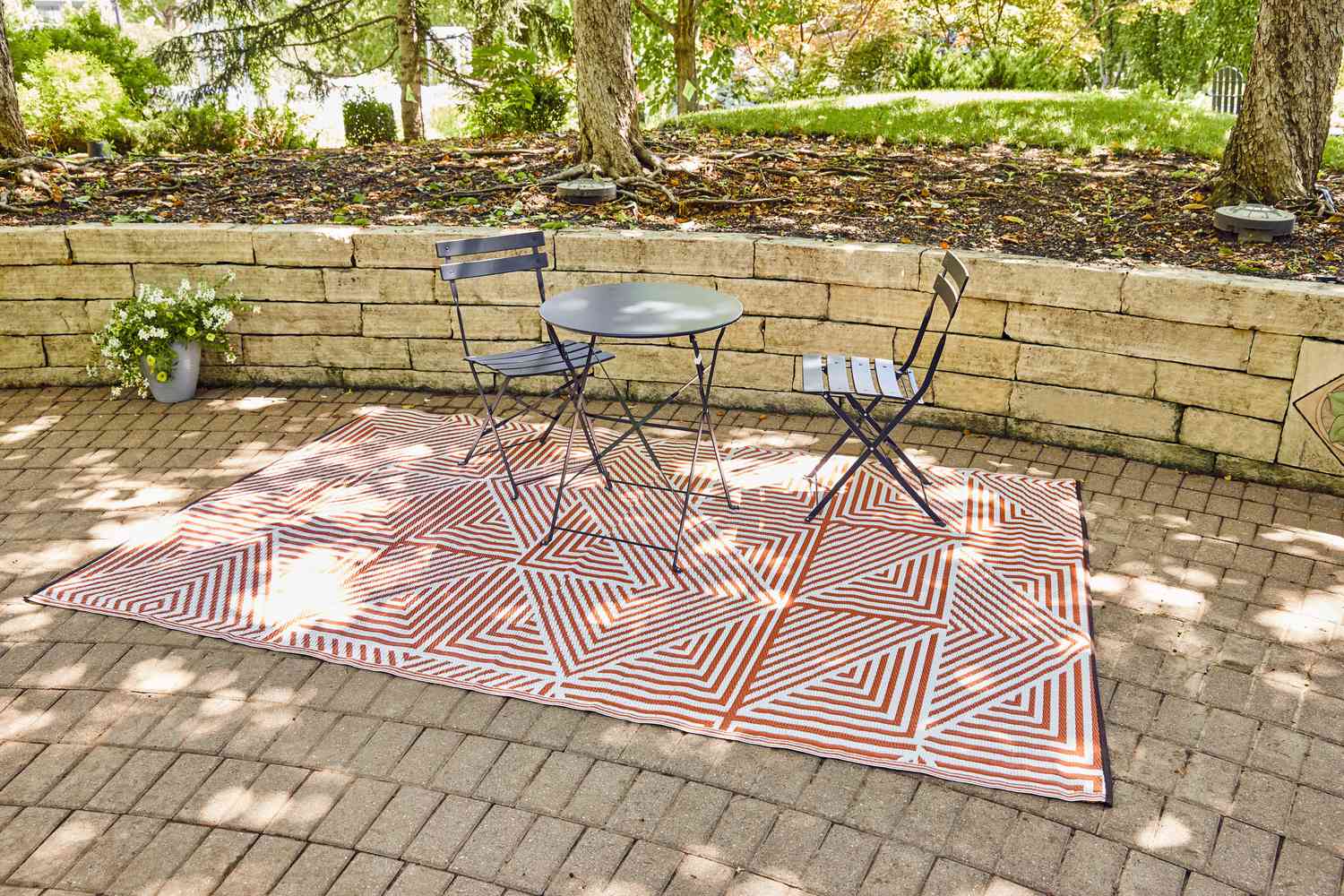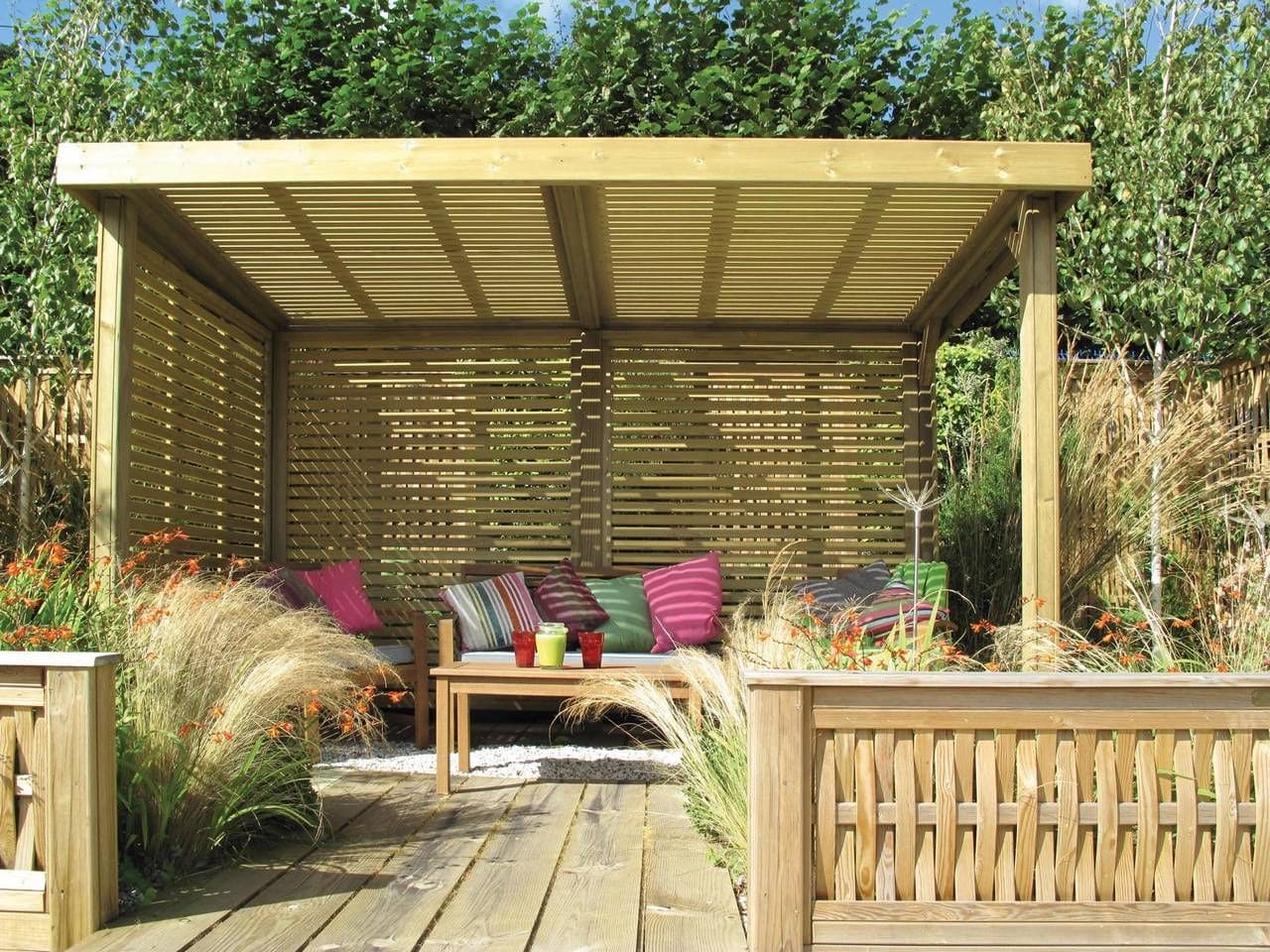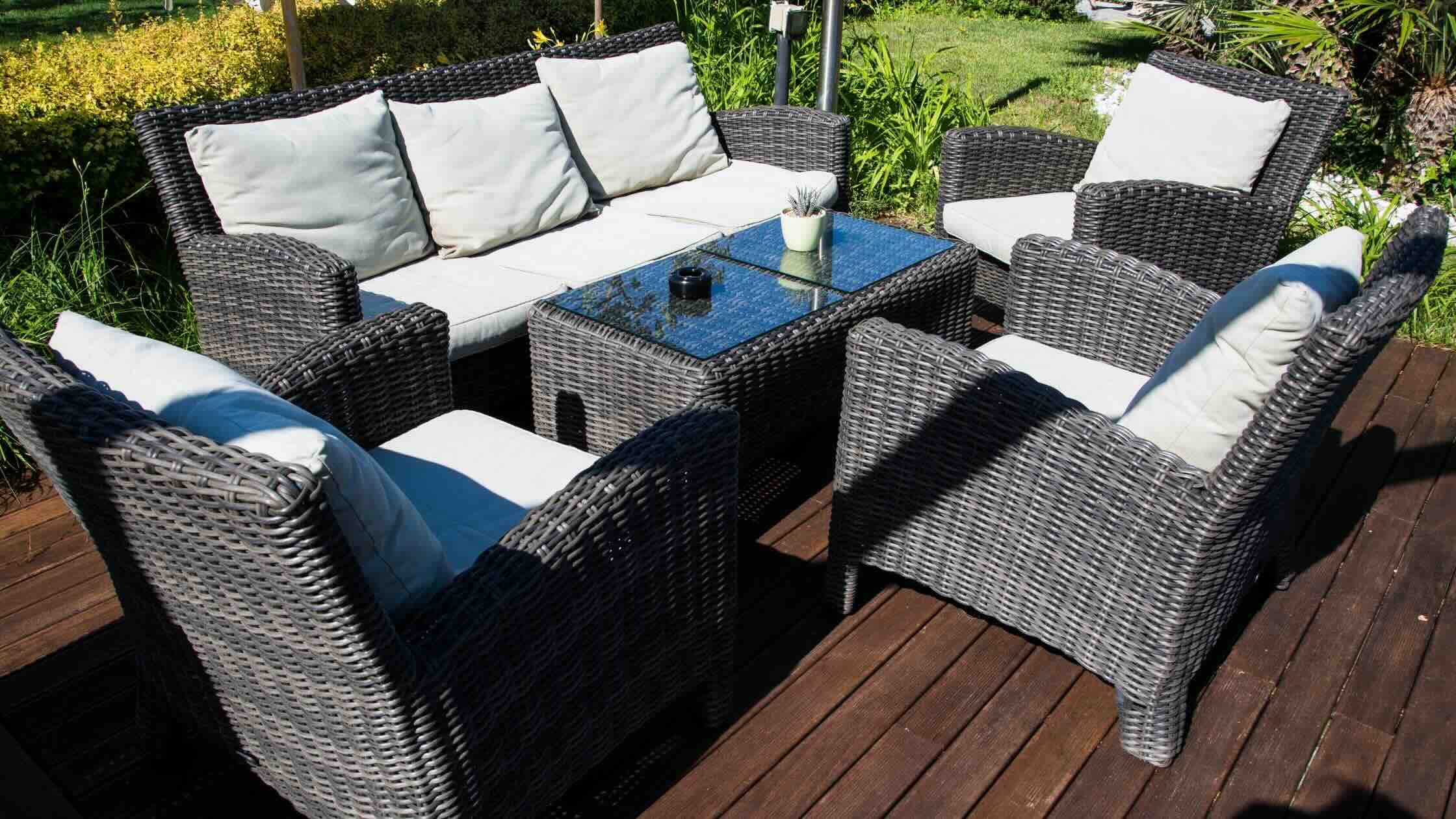Home>Furniture & Design>Outdoor Furniture>How To Build An Outdoor Couch


Outdoor Furniture
How To Build An Outdoor Couch
Modified: August 27, 2024
Learn how to build your own outdoor couch with our expert tips and design ideas. Create the perfect outdoor furniture with our step-by-step guide. Outdoor furniture, furniture, and design.
(Many of the links in this article redirect to a specific reviewed product. Your purchase of these products through affiliate links helps to generate commission for Storables.com, at no extra cost. Learn more)
Introduction
When it comes to creating an inviting and comfortable outdoor space, a well-crafted outdoor couch can be a game-changer. Imagine lounging in the open air, basking in the warm sunlight, or stargazing under a clear night sky from the plush comfort of your own handmade couch. Building an outdoor couch not only adds a personal touch to your outdoor living area but also allows you to tailor the design to your specific preferences and dimensions. Whether you're a seasoned DIY enthusiast or a novice looking for a rewarding project, constructing an outdoor couch can be an immensely gratifying endeavor.
The process of building an outdoor couch involves a blend of creativity, precision, and practicality. From selecting the right materials and tools to designing and planning the structure, every step is crucial in ensuring the durability, comfort, and aesthetic appeal of the final product. By following a well-thought-out plan and incorporating your unique style, you can create a piece of furniture that complements your outdoor surroundings and serves as a focal point for relaxation and social gatherings.
In this comprehensive guide, we will delve into the essential steps and considerations for building an outdoor couch. From choosing the appropriate materials and tools to constructing the frame, attaching the seat and backrest, and adding cushions and finishing touches, we will explore each phase of the construction process in detail. By the end of this journey, you will be equipped with the knowledge and inspiration to embark on your own outdoor couch-building adventure. So, roll up your sleeves, unleash your creativity, and get ready to transform your outdoor space with a stunning and comfortable couch that you can proudly call your own.
Key Takeaways:
- Building an outdoor couch is a creative and rewarding DIY project that allows you to customize your outdoor space with a comfortable and stylish seating option.
- From selecting materials to adding cushions, building an outdoor couch requires careful planning, precision, and attention to detail for a durable and inviting final product.
Read more: How To Build A Couch With A Recliner
Materials and Tools
Before diving into the construction of your outdoor couch, it’s essential to gather the necessary materials and tools to ensure a smooth and efficient building process. The selection of materials will influence the durability, comfort, and visual appeal of the final product, while the tools will enable you to bring your design to life with precision and craftsmanship. Here’s a comprehensive list of the materials and tools you’ll need:
Materials:
- Lumber: Choose high-quality, weather-resistant wood such as cedar, teak, or redwood for the frame and seating components. Ensure that the lumber is suitable for outdoor use and can withstand the elements.
- Screws and Fasteners: Opt for corrosion-resistant screws and fasteners to secure the frame and joints effectively. Stainless steel or coated screws are ideal for outdoor furniture construction.
- Outdoor Cushions: Select cushions specifically designed for outdoor use, crafted from durable and water-resistant materials to withstand exposure to sunlight and moisture.
- Outdoor Fabric: If you plan to sew your own cushion covers, choose high-quality outdoor fabric that is fade-resistant, mildew-resistant, and easy to clean.
- Wood Sealant or Stain: Protect the wooden components of your outdoor couch with a suitable wood sealant or stain to enhance their longevity and resistance to weathering.
Tools:
- Measuring Tape and Carpenter's Square: Accurate measurements and precise angles are crucial in furniture construction, making these tools indispensable for ensuring proper dimensions and alignment.
- Saw: Whether it's a circular saw, miter saw, or handsaw, a reliable cutting tool is essential for shaping the lumber according to your design specifications.
- Drill and Bits: A power drill with a selection of drill bits will facilitate the assembly of the frame and the attachment of various components.
- Sandpaper and Wood Finish: Smooth out rough edges and surfaces with sandpaper, and finish the wood with a suitable wood sealant, stain, or paint to achieve a polished look.
- Sewing Machine (if making cushion covers): If you're opting for a DIY approach to cushion covers, a sewing machine will be necessary for creating custom-fitted covers from the outdoor fabric.
By ensuring that you have the right materials and tools at your disposal, you can embark on the outdoor couch-building journey with confidence, knowing that you’re equipped to bring your vision to fruition with precision and quality craftsmanship.
Design and Planning
Before picking up a single tool, it’s crucial to invest time in thoughtful design and planning to ensure that your outdoor couch aligns with your vision and functional requirements. Whether you prefer a sleek modern design, a rustic and charming aesthetic, or a versatile sectional configuration, the design phase sets the stage for a successful and satisfying construction process. Here are the key considerations for the design and planning of your outdoor couch:
Functional Layout: Consider how you intend to use the outdoor couch. Will it serve as a cozy spot for solitary relaxation, a gathering place for socializing, or a versatile seating arrangement for outdoor dining? Tailor the dimensions and layout of the couch to accommodate your specific needs and the available outdoor space.
Style and Aesthetic: Infuse your personal style into the design, whether it’s through sleek and minimalist lines, ornate detailing, or a harmonious blend of materials. Take inspiration from your outdoor surroundings and existing decor to ensure that the couch complements its environment while making a statement of its own.
Comfort and Ergonomics: Pay attention to the ergonomics of the seating and backrest to ensure optimal comfort. Consider the angle and depth of the seat, as well as the height and inclination of the backrest, to create a relaxing and supportive seating experience.
Weather Resistance: Select materials and finishes that can withstand the outdoor elements. From choosing weather-resistant lumber to opting for durable and fade-resistant outdoor fabric for cushions, prioritize longevity and resilience against sunlight, moisture, and temperature variations.
Modularity and Flexibility: If you envision a versatile outdoor seating arrangement, consider incorporating modularity into the design. This could involve creating sectional pieces that can be rearranged to suit different occasions and spatial configurations.
Sketch out your design ideas, explore different layout options, and visualize how the outdoor couch will integrate with your outdoor living space. Consider the flow of movement, the interaction with other outdoor furniture, and the overall ambiance you wish to create. By investing time in meticulous design and planning, you’ll lay a solid foundation for the construction phase, setting the stage for a well-crafted and harmonious addition to your outdoor oasis.
Read more: How To Build Couch With Recliner
Building the Frame
With a clear design in mind and the necessary materials and tools at your disposal, it’s time to embark on the construction of the frame, which forms the structural backbone of your outdoor couch. The frame not only provides stability and support but also serves as the canvas upon which the aesthetic and functional elements of the couch will be built. Here’s a step-by-step guide to building the frame:
1. Cutting the Lumber: Begin by accurately measuring and cutting the lumber according to your design specifications. Use a saw, such as a circular saw or miter saw, to achieve clean and precise cuts for the various frame components, including the sides, backrest, and support pieces.
2. Assembling the Base: Construct the base of the frame by joining the side pieces with the appropriate fasteners and reinforcing the joints for stability. Use a carpenter’s square to ensure that the corners are perfectly angled and aligned.
3. Adding Support and Bracing: Incorporate additional support pieces and diagonal bracing to enhance the strength and rigidity of the frame. This is particularly important for outdoor furniture, as it will endure varying loads and environmental conditions.
4. Attaching the Backrest: If your design includes a backrest, securely attach it to the frame, ensuring that it is positioned at the desired angle for comfort and support. Reinforce the connection points to withstand the weight and pressure exerted on the backrest.
5. Finishing and Sanding: Once the frame is assembled, carefully sand the edges and surfaces to achieve a smooth and splinter-free finish. Pay attention to any sharp corners or rough spots that could detract from the overall comfort and visual appeal of the couch.
6. Applying Wood Finish: Consider applying a suitable wood sealant, stain, or paint to protect the frame from outdoor elements and enhance its aesthetic appeal. Choose a finish that complements your outdoor decor while providing long-term durability.
By meticulously constructing the frame with attention to detail and structural integrity, you’ll lay the groundwork for a sturdy and enduring outdoor couch. With the frame in place, you’re ready to move on to the next phase of the construction process, bringing you one step closer to enjoying your custom-built outdoor seating oasis.
Attaching the Seat and Backrest
With the frame of your outdoor couch standing strong, the next pivotal step is to attach the seat and backrest, transforming the structural foundation into a comfortable and inviting seating arrangement. This phase involves precision and attention to detail to ensure that the seating components are securely integrated with the frame while prioritizing comfort and visual appeal. Here’s a comprehensive guide to attaching the seat and backrest:
1. Seat Placement and Alignment: Position the seat component onto the frame, ensuring that it aligns seamlessly with the edges and contours of the frame. Use a measuring tape to verify that the seat is centered and evenly positioned for a balanced appearance.
2. Securing the Seat: Utilize corrosion-resistant screws and fasteners to securely attach the seat to the frame, focusing on reinforcing the connection points along the sides and the front edge. This step is crucial in ensuring the stability and weight-bearing capacity of the seat.
3. Backrest Attachment: If your design incorporates a backrest, carefully align it with the designated mounting points on the frame. Securely fasten the backrest to the frame, paying attention to the angle and inclination to provide optimal support and comfort for the users.
4. Reinforcement and Stability: To enhance the overall stability and resilience of the seat and backrest, consider adding additional bracing or reinforcement along the underside of the seat and the backrest. This extra support can contribute to the longevity and durability of the seating components.
5. Comfort Considerations: Evaluate the ergonomics of the seating arrangement, ensuring that the angle of the backrest and the depth of the seat align with ergonomic principles for comfortable and supportive seating. Make any necessary adjustments to optimize the seating experience.
6. Finishing Touches: Once the seat and backrest are securely attached, perform a thorough inspection to identify any sharp edges, protruding fasteners, or imperfections that could compromise the comfort and safety of the couch. Address these issues by sanding, smoothing, and refinishing as needed.
By methodically attaching the seat and backrest with precision and care, you’ll witness the transformation of the frame into a fully functional and inviting outdoor couch. The integration of these crucial components brings you closer to the realization of your vision, setting the stage for the final embellishments and the ultimate enjoyment of your handcrafted outdoor seating masterpiece.
When building an outdoor couch, make sure to use weather-resistant materials such as cedar or teak to ensure durability and longevity.
Adding Cushions and Finishing Touches
As you approach the final stages of constructing your outdoor couch, the addition of cushions and the application of finishing touches will elevate the comfort, aesthetic appeal, and overall allure of the seating ensemble. This phase allows you to infuse personality and style into your creation while prioritizing the comfort and visual cohesion of the outdoor couch. Here’s a detailed guide to adding cushions and finishing touches:
1. Selecting Outdoor Cushions: Choose cushions specifically designed for outdoor use, crafted from durable and weather-resistant materials. Consider the color, texture, and thickness of the cushions to complement the design of your outdoor couch while ensuring optimal comfort.
2. Customizing Cushion Covers: If you opt for a DIY approach, consider sewing custom-fitted covers for the cushions using high-quality outdoor fabric. Ensure that the covers are removable for easy cleaning and maintenance, and incorporate closures that withstand outdoor conditions.
3. Positioning and Arrangement: Strategically place the cushions on the seat and backrest, ensuring a snug and secure fit. Experiment with different arrangements to achieve a visually appealing and inviting seating configuration that suits your preferences.
4. Bolstering Comfort: Consider incorporating additional throw pillows or bolster cushions to enhance the comfort and relaxation offered by the outdoor couch. These accessories can introduce layers of texture and provide extra lumbar support for an indulgent lounging experience.
5. Embracing Details: Pay attention to the finer details, such as decorative trim, piping, or embellishments on the cushion covers, to infuse a touch of sophistication and individuality into the overall design of the outdoor couch.
6. Weatherproofing and Maintenance: Prioritize the longevity of the cushions by applying a fabric protector or waterproofing treatment to shield them from moisture and stains. Additionally, establish a routine maintenance schedule to keep the cushions clean and vibrant throughout the seasons.
7. Final Inspections and Adjustments: Conduct a thorough assessment of the cushions and their integration with the outdoor couch. Ensure that the cushions are securely positioned and that their colors and textures harmonize with the surrounding outdoor environment.
By adding cushions and attending to the finishing touches, you’ll breathe life and character into your outdoor couch, transforming it into a welcoming and stylish haven for relaxation and leisure. This phase marks the culmination of your dedicated craftsmanship and creative vision, bringing you closer to enjoying the fruits of your labor in the embrace of your personalized outdoor seating retreat.
Conclusion
Congratulations on embarking on the fulfilling journey of building your own outdoor couch. From the initial design and material selection to the meticulous construction and thoughtful embellishments, you’ve invested creativity, skill, and dedication into creating a customized piece of outdoor furniture that reflects your style and enhances your outdoor living space.
As you admire the completed outdoor couch, take pride in the craftsmanship and attention to detail that have culminated in a functional and inviting seating ensemble. Your outdoor couch is more than just a piece of furniture; it’s a testament to your ingenuity and a catalyst for memorable moments spent in the open air.
Embrace the comfort and relaxation that your handcrafted couch offers, whether it’s a tranquil spot for solitary reflection, a cozy setting for intimate conversations, or a central hub for outdoor gatherings. The versatility and allure of your outdoor couch make it a cherished addition to your outdoor oasis, inviting you and your guests to savor the beauty of nature in utmost comfort.
As you enjoy the fruits of your labor, remember the satisfaction of transforming raw materials into a functional work of art. The process of building an outdoor couch has not only enriched your outdoor space but also enriched your DIY skills and creative spirit. Your endeavor serves as an inspiration for others to embark on their own furniture-building adventures, fostering a culture of hands-on craftsmanship and personalized outdoor living experiences.
With your outdoor couch as the centerpiece of your outdoor sanctuary, may it continue to be a source of relaxation, joy, and connection with the natural world. As the seasons change and the years unfold, your meticulously crafted outdoor couch will stand as a testament to your vision and dedication, offering comfort and respite amid the ever-changing tapestry of outdoor life.
So, as you settle into the embrace of your outdoor couch, surrounded by the beauty of your outdoor haven, take a moment to savor the fulfillment of your DIY journey and the enduring allure of your personalized outdoor retreat.
Frequently Asked Questions about How To Build An Outdoor Couch
Was this page helpful?
At Storables.com, we guarantee accurate and reliable information. Our content, validated by Expert Board Contributors, is crafted following stringent Editorial Policies. We're committed to providing you with well-researched, expert-backed insights for all your informational needs.















0 thoughts on “How To Build An Outdoor Couch”